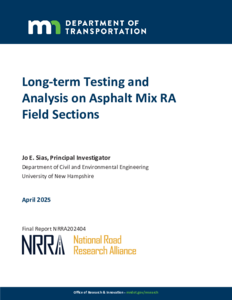Developing Best Practices for Rehabilitation of Concrete with Hot Mix Asphalt (HMA) Overlays Related to Density and Reflective Cracking
Creator
Date Created
2021
Report Number
NRRA202109
Description




